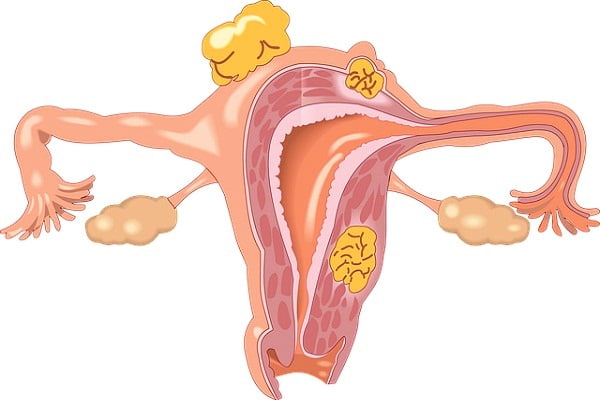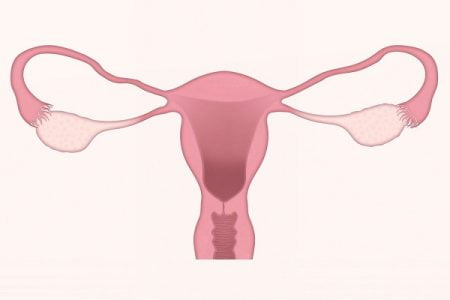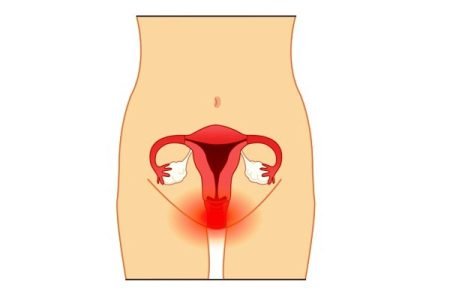Types of Uterine Cancer
- Updated on: Jul 27, 2024
- 3 min Read
- Published on Apr 5, 2019

What is Uterine Cancer?
Uterine cancer is one of the most common type of gynecologic cancers that usually forms in the tissues of uterus (small, hollow and pear-shaped organ present in the pelvis of women, where a baby grows). Uterine cancer is the most common cancer in United States, accounting for almost 6% of all cancers among women. It usually occurs at the end of menopause, but it may also occur at the beginning of menopause. Women therefore should not consider abnormal vaginal bleeding as an indication of menopause.
The most common symptoms of uterine cancer are:
- Pain in the pelvis
- Painful intercourse
- Difficulty in urination
- Abnormal vaginal discharge or bleeding
Uterine cancer types
There are two primary types of uterine cancers which develop in different parts of the uterus:
- Endometrial cancer
- Uterine sarcoma
Endometrial cancer
This type of uterine cancer develops in the endometrium of the uterus (lining of the uterus). This is one of the most common types of uterine cancer and accounts for more than 90 % of cases. Since endometrium is part of the uterus, endometrial cancer is also called sometimes uterine cancer.
Endometrial cancer usually includes cancers of the uterus, cervix, ovaries, vulva, vagina and fallopian tubes. Endometrial cancer occurs when cells present in the inner lining of the uterus (endometrium) grow uncontrollably. On the basis of appearance under a microscope, endometrial cancer has following subtypes:
- Endometrioid adenocarcinoma
- Serous adenocarcinoma
- Adenosquamous carcinoma
- Uterine carcinosarcoma
Endometrioid adenocarcinoma
Most of the cases of endometrial cancer belong to endometrioid adenocarcinoma. Endometrioid cancers are made up of cells that resemble the normal lining of the uterus (endometrium). These cancers have squamous as well as glandular cells. Endometrioid adenocarcinoma have many variants which are given below:
- Adenocarcinoma
- Ciliated carcinoma
- Villoglandular adenocarcinoma
- Secretory carcinoma
- Adenosquamous
- Adenoacanthoma
- Clear-cell carcinoma or mucinous adenocarcinoma
- Papillary serous adenocarcinoma
Both clear-cell carcinoma and papillary serous adenocarcinoma are less common forms of endometrial adenocarcinomas but they are more aggressive and rapidly growing as compared to other endometrial cancers.
Serous adenocarcinoma
These endometrial cancers mostly spread to lymph nodes and other parts of the body.
Adenosquamous carcinoma
It is a rare uterine cancer which resembles adenocarcinoma and carcinoma of the squamous cells that line the outermost layer of the uterus.
Uterine carcinosarcoma
These endometrial cancers spread rapidly to lymph nodes and other body parts and also resemble endometrial cancer and sarcoma.
Uterine sarcoma
Uterine sarcoma is a rare type of uterine cancer found in the muscles and some other tissues of the uterus. They comprise almost 3% of all the uterine cancers. Uterine sarcomas have many subtypes which differ from each other in terms of development, changes they undergo with time, and the way they are treated.
Women who have or previously had radiation therapy in the pelvis, or who have undergone tamoxifen treatment for breast cancer are at a greater risk of developing uterine sarcoma. Although uncommon, uterine sarcomas are among the most fatal of all uterine malignancies
Uterine sarcomas consist of almost 3% of all cancers. Some of the less common uterine cancers are uterine papillary serous carcinoma, clear cell carcinoma, and carcinosarcoma (malignant mixed mesodermal tumors or malignant mixed mullerian tumors).
Uterine sarcoma occurs due to abnormal growth of cells in the body of the uterus, usually in the muscle layer. These cells become unresponsive to regular cell growth, division, and death signals which they are normally supposed to. They also become disorganized and therefore grow into a tumor, which may break through into other layers of the uterus. Uterine sarcomas show mainly following symptoms:
- Unusual bleeding from the vagina after menopause
- Presence of a mass (lump or growth) in the vagina
- Abdominal pain
- Feeling of fullness
- Recurrent urination
Causes of uterine sarcoma
Although the exact cause of uterine sarcoma is unknown, following factors may play an important role in their development:
- Past radiation therapy
- Tamoxifen treatment for breast cancer
- Race (African American women are at a higher risk as compared to white or Asian women)
- Genetics (abnormal gene responsible for retinoblastoma also increases the risk for uterine sarcoma)
- Women who have never expected
Stages of uterine sarcoma
Following are the stages of uterine sarcoma:
Stage I uterine sarcoma
At this stage, the cancer is present in the uterus only.
Stage II uterine sarcoma
Cancer at this stage has spread to the cervix
Stage III uterine sarcoma
In this stage, the cancer has spread ahead of the cervix and uterus but is still present in the pelvis.
Stage IV uterine sarcoma
At this stage, cancer has spread outside the pelvis involving abdomen, bladder and groin.
Types of uterine sarcomas
There are three main types of uterine sarcomas:
- Uterine leiomyosarcoma
- Endometrial stromal sarcomas
- Undifferentiated sarcoma
Uterine leiomyosarcoma
This the most common type of uterine sarcoma which is usually formed in the muscular wall of uterus known as the myometrium. It accounts for about 2 % of all uterine cancers.
Endometrial stromal sarcomas
These tumors develop supporting connective tissues of the endometrium. These cancers account for less than 1 % of all uterine cancers and have a very slow growth.
Undifferentiated sarcoma
This is a rare type of uterine sarcoma, almost similar to endometrial stromal sarcoma. It is usually more aggressive and accounts for less than 1% of all uterine cancers.












